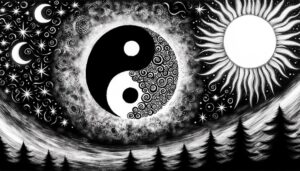Interpreting the Cross Symbol with Non-Religious Meaning
The cross symbol holds a rich tapestry of meanings beyond its religious affiliations. In ancient civilizations such as Mesopotamia and Mesoamerica, it encapsulated cardinal directions and cosmological order.
It signifies unity, balance, and the intersection of material and spiritual domains in various cultures. Used in navigation, the cross denotes key intersections, enhancing map usability.
In art, it explores balance and equilibrium through simplicity and symmetry. Modern interpretations see the cross symbolizing minimalist aesthetics, balance, and alternative lifestyles.
The enduring relevance and adaptive significance of the cross symbol offer fascinating insights into its multifaceted roles across time and cultures.
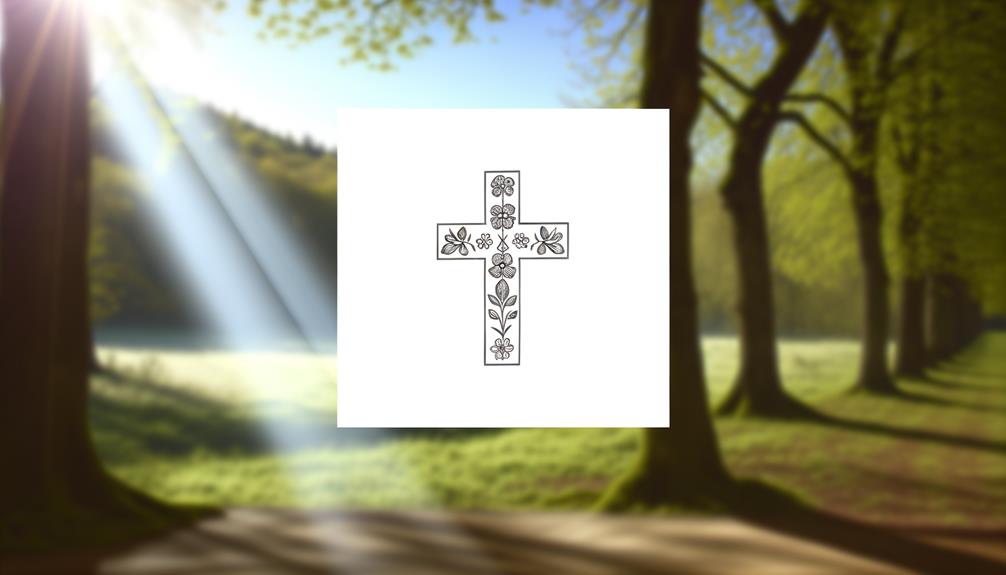
Key Takeaways
- Represents unity and balance, often symbolizing the convergence of elements.
- Denotes the intersection of material and spiritual domains, embodying harmony.
- Acts as a visual anchor in navigation and cartography.
- Revered for its simplicity and symmetry in art and design.
- Symbolizes the four cardinal directions in indigenous cultures.
Ancient Civilizations
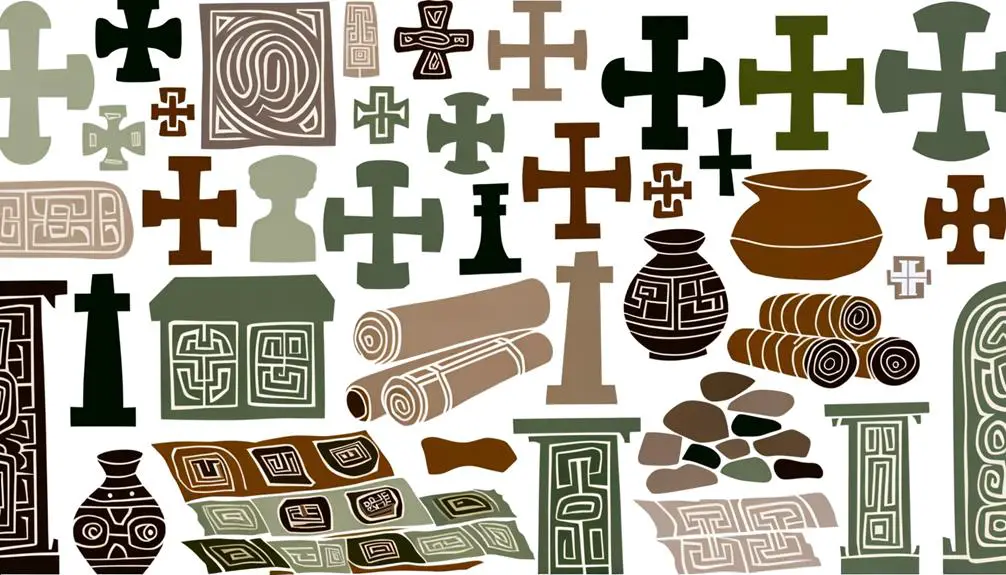
In ancient civilizations, the cross symbol often served as a powerful emblem representing various aspects of life and the cosmos, independent of religious connotations.
Archaeological evidence indicates that crosses appeared in diverse cultures, including Mesopotamia, Egypt, and Mesoamerica. The symbol frequently encapsulated ideas related to the cardinal directions, the intersection of terrestrial and celestial domains, and the balance of opposing forces.
For instance, the Egyptian ankh, often interpreted as a cross with a loop, signified eternal life and the union of male and female principles. Similarly, in Mesoamerican cultures, the cross symbolized the four cardinal points and the center of the world, anchoring cosmological order.
Therefore, the cross functioned as a versatile and profound icon in ancient societies.
Cultural Symbolism
Cultural symbolism of the cross extends beyond its ancient origins, presenting a multifaceted icon representing concepts such as unity, balance, and the convergence of distinct elements across various societies.
In many cultures, the cross signifies the intersection of the material and spiritual domains. The horizontal and vertical lines are often interpreted as symbols of earthly and celestial spheres, respectively. Additionally, the cross is seen as an emblem of harmony and equilibrium, reflecting a synthesis of opposing forces.
In indigenous cultures, it can represent the four cardinal directions, embodying a holistic worldview. Therefore, the cross serves as a versatile symbol, transcending its historical roots to embody diverse, non-religious meanings within a wide array of cultural contexts.
Navigation and Maps
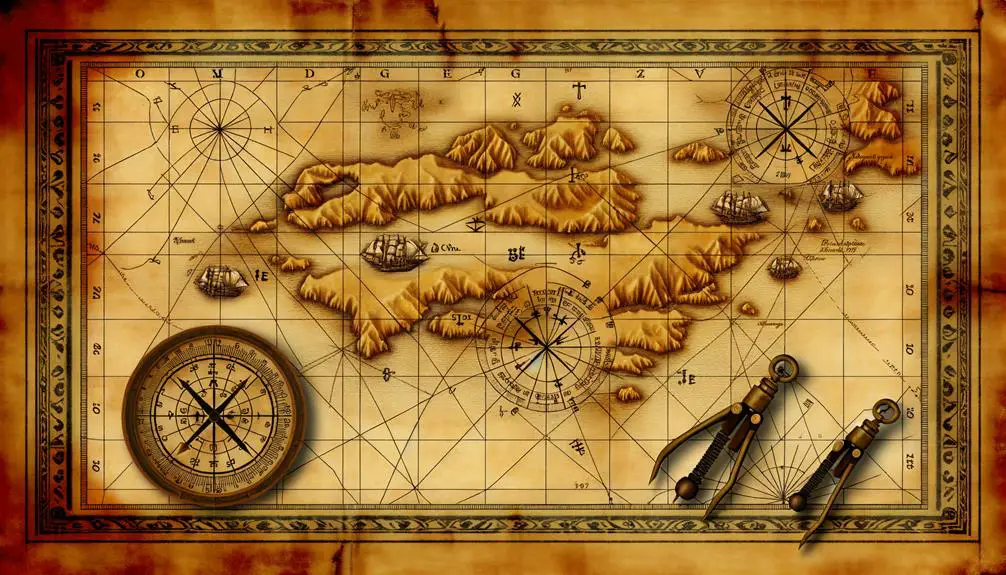
Utilized extensively in navigation and cartography, the cross symbol serves as an important reference point for orienting maps and marking significant locations.
In this situation, the cross is often employed to denote key intersections, such as the convergence of major roads or the location of important landmarks. It acts as a visual anchor, simplifying the reader's ability to navigate complex geographical layouts.
Additionally, the cross symbol's simple design and universal recognition contribute to its effectiveness in conveying precise spatial information. This utility is evident in various mapping applications, from urban planning to outdoor recreational guides, where clarity and accuracy are essential.
The cross symbol plays a vital role in enhancing the usability and interpretability of maps.
Artistic Representations
Often revered for its simplicity and symmetry, the cross symbol frequently appears in artistic representations as a powerful element of design and expression. Artists and designers utilize the cross for its aesthetic appeal and its ability to convey diverse meanings beyond religious connotations. It serves as a versatile motif in various artistic contexts, including:
- Abstract Art: The cross is employed to explore themes of balance and equilibrium.
- Graphic Design: It is used to create focal points and guide visual flow.
- Architecture: The cross can influence structural forms and spatial arrangements.
- Textile Patterns: It is incorporated into fabric designs to add geometric interest.
This non-religious use of the cross underscores its broad applicability and enduring significance in art.
Modern Interpretations
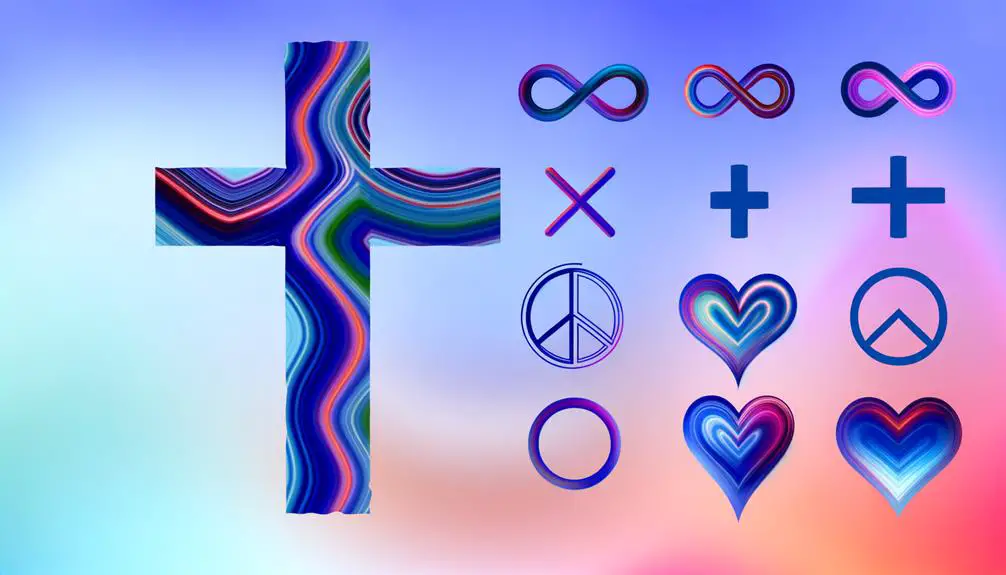
In contemporary contexts, the cross symbol has evolved to represent a multitude of ideas and concepts, reflecting its adaptability and resonance in modern culture. Beyond its traditional religious connotations, the cross is now frequently seen as a universal emblem of balance, intersection, and unity.
In design and fashion, it often denotes minimalist aesthetics or alternative lifestyles. Its geometric simplicity allows it to be a versatile motif in art and architecture.
In social media and digital communication, the cross can symbolize a meeting point or a directive, such as 'add' or 'close.' This broad applicability underscores the cross's enduring relevance, illustrating how a symbol can transcend its origins to acquire new, diverse meanings in a rapidly changing world.
Conclusion
The cross symbol, stripped of its religious connotations, emerges as a multifaceted emblem woven into the fabric of ancient civilizations, cultural symbolism, navigation, art, and modern interpretations.
Like a chameleon, it adapts to various contexts, embodying notions of intersection and balance.
This emblem's enduring presence across disparate domains underscores its universal resonance, reflecting humanity's intrinsic quest for meaning and connection.
Ultimately, the cross serves as a tribute to the profound interplay between symbol and significance throughout history.


